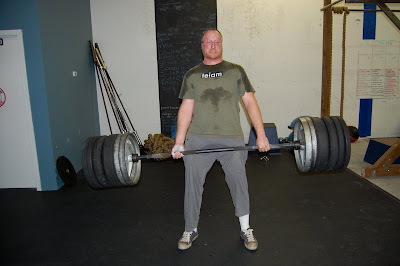As a CSCS & Crossfit Instructor, I believe it's critically important to know the bioenergetic systems at work during a strength & conditioning program, especially when working with athletes and teams. I happen to really enjoy studying bioenergetics and creating programs to optimize these metabolic pathways. Each of these pathways is a vehicle to deliver adenosine triphophate (ATP) to the fuel the muscles at work. ATP is responsible for human movement and is manufactured by three different pathways in the body.
What is 'bioenergetics'?
"The flow of energy in a biological system concerned primarily with the conversion of food into biologically usable forms of energy."
TERMINOLOGY Energy - The ability or capacity to do work. Bioenergetics - the flow of energy in a biological system.
Energy Systems -
1) Phosphogen: an anaerobic process, one that occurs in the absence of molecular oxygen
2) Glycolitic: breakdown of carbohydrates either glycogen stored in the muscle or glucose delivered in the blood
3) Oxidative: primary source of ATP at rest and during low-intensity activities and uses primarily carbs and fats as energy.
A strength & conditioning coach will typically assign metabolic and sport specificity to the exercises composing the WOD. In a traditional S&C program, ONE bioenergetic pathway will be assigned to the WOD to optimize energy use. S&C coaches typically DO NOT optimize multiple pathways in a WOD, and that is THE MAJOR DIFFERENCE WITH CROSSFIT WORKOUTS: CrossFit may combine 2 or more bioenergetic pathways to train and perhaps improve all 3 pathways simultaneously.
Phosphogen - This system provides ATP primarily for short-term, high intensity activities (e.g., resistance training and sprinting) and is active at the start of all exercise regardless of intensity.
Gylcolysis - Is the breakdown of carbohydrates - either glycogen stored in the muscle or glucose delivered in the blood - to produce ATP that supplements the supply from the phosphogen system for high intensity muscular activity.
Oxidative - The primary source of ATP at rest and during low-intensity activities and uses primarily carbohydrates and fats as substrates.
Most of the work we do in CrossFit WODs is "metabolically expensive," as Shelly would say. In other words, the exercises and the exercise order expend a large amount of calories in a relatively short amount of time. Given this, which pathway do CF WODs use? Let's first review which ones it does not use.
First, CF generally involves workouts with a timed component and external load. This type of work capacity requires ATP quickly, and fat is not a quick provider of ATP, so it's not the oxidative system. The phosphogen system will severely deplete ATP, perhaps in 30 seconds before it needs to rebuild, and CF WODs usually take longer than 30 seconds to complete. It's the glycolitic pathway that is the primary pathway in most CF WODs, using carbohydrates and SOME fat & minimal protein for ATP.
"But I want to burn fat, not sugars!"
This is often what we hear when telling people about the benefits of CrossFit methodology.
Though the majority of calories will come from blood glucose and glycogen during the WOD. It's the external loads & lifting that really churn adipose tissue (body fat) after the WOD.
Your system is doing all it can to repair damage to the muscle and restore glycogen levels to normal. It takes energy to do this, and since the oxidative system is the pathway we use while at rest, the majority of this energy comes from fat. Think of it this way: Your 5 AM WOD is still at work at 5 AM the next day – 24 hours later, just trying repair itself and figure out what the hell it did to deserve a beating 4 days a week. Lucky you!
CrossFit burns glucose during & fat post-workout. It also improves each bioenergetic pathway through multijoint, high intensity, functional conditioning.






















